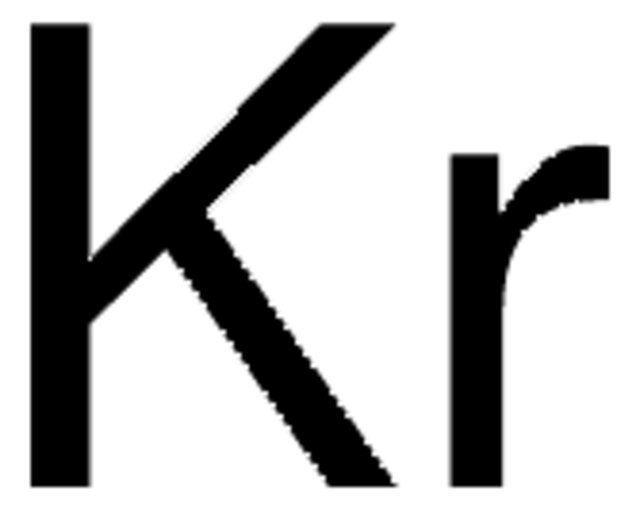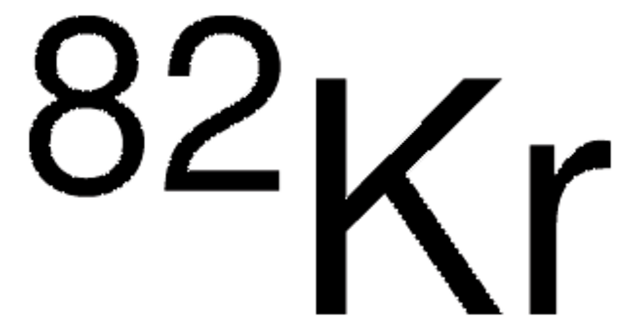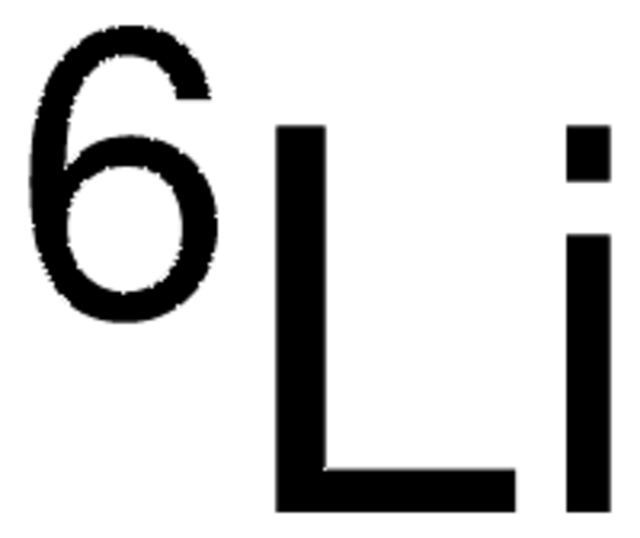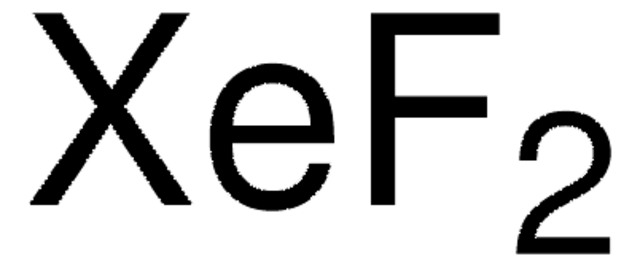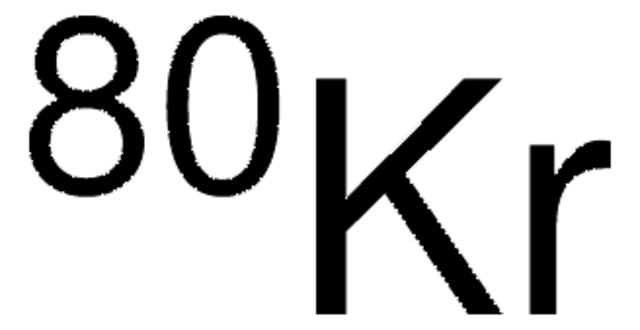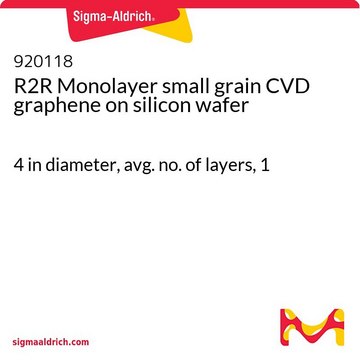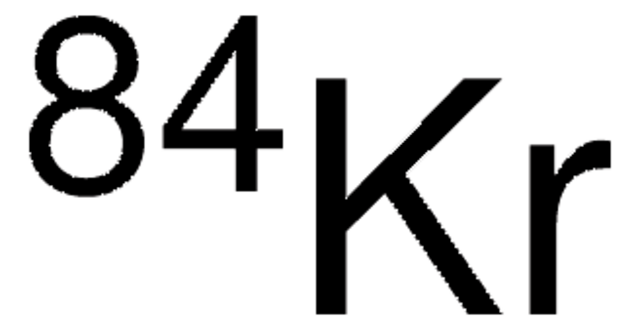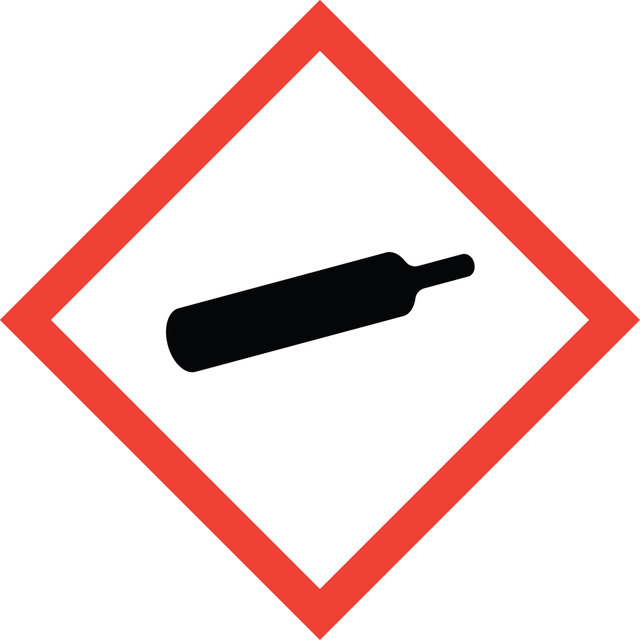All Photos(1)
About This Item
Empirical Formula (Hill Notation):
Kr
CAS Number:
Molecular Weight:
83.80
EC Number:
MDL number:
UNSPSC Code:
12352300
PubChem Substance ID:
NACRES:
NA.23
Recommended Products
Assay
≥99.998%
SMILES string
[Kr]
InChI
1S/Kr
InChI key
DNNSSWSSYDEUBZ-UHFFFAOYSA-N
Looking for similar products? Visit Product Comparison Guide
Packaging
pressure tin
filling pressure at 15°C: 11 bar; content (15°C, 1 bar): 11 l
filling pressure at 15°C: 11 bar; content (15°C, 1 bar): 11 l
Other Notes
Sales restrictions may apply
Signal Word
Warning
Hazard Statements
Precautionary Statements
Hazard Classifications
Press. Gas Compr. Gas
Storage Class Code
2A - Gases
WGK
nwg
Flash Point(F)
Not applicable
Flash Point(C)
Not applicable
Personal Protective Equipment
dust mask type N95 (US), Eyeshields, Gloves
Regulatory Information
新产品
Choose from one of the most recent versions:
Certificates of Analysis (COA)
Lot/Batch Number
Don't see the Right Version?
If you require a particular version, you can look up a specific certificate by the Lot or Batch number.
Already Own This Product?
Find documentation for the products that you have recently purchased in the Document Library.
Carlos A Fernandez et al.
Journal of the American Chemical Society, 134(22), 9046-9049 (2012-05-18)
Krypton (Kr) and xenon (Xe) adsorption on two partially fluorinated metal-organic frameworks (FMOFCu and FMOFZn) with different cavity size and topologies are reported. FMOFCu shows an inversion in sorption selectivity toward Kr at temperatures below 0 °C while FMOFZn does
Dieter Hauchecorne et al.
Physical chemistry chemical physics : PCCP, 13(21), 10204-10213 (2011-04-22)
Using FTIR and Raman spectroscopy, the formation of halogen bonded complexes of the trifluorohalomethanes CF(3)Cl, CF(3)Br and CF(3)I with dimethyl sulfide (DMS) dissolved in liquid krypton has been investigated. For CF(3)Br and CF(3)I, evidence was found for the formation of
Anne-Lise Hachulla et al.
Radiology, 263(1), 253-259 (2012-02-15)
To evaluate the tolerance and level of enhancement achievable after inhalation of stable krypton. This study was approved by the institutional review board and the local ethics committee. Written informed consent was obtained from all subjects. The study was planned
Jody C May et al.
Journal of the American Society for Mass Spectrometry, 22(7), 1134-1145 (2011-09-29)
A hybrid ion mobility-mass spectrometer (IM-MS) incorporating a variable-temperature (80-400 K) drift tube is presented. The instrument utilizes an electron ionization (EI) source for fundamental small molecule studies. Ions are transferred to the IM-MS analyzer stages through a quadrupole, which can
Joseph S Six et al.
PloS one, 7(11), e49927-e49927 (2012-12-05)
Hyperpolarized (hp) (129)Xe and hp (83)Kr for magnetic resonance imaging (MRI) are typically obtained through spin-exchange optical pumping (SEOP) in gas mixtures with dilute concentrations of the respective noble gas. The usage of dilute noble gases mixtures requires cryogenic gas
Our team of scientists has experience in all areas of research including Life Science, Material Science, Chemical Synthesis, Chromatography, Analytical and many others.
Contact Technical Service
